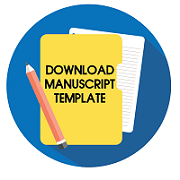Media Pembelajaran Video Animasi Biomekanika Melalui Metode Circuit Training untuk Meningkatkan Keterampilan Dasar Volleyball
DOI:
https://doi.org/10.29408/porkes.v7i2.27429Keywords:
Biomechanics; circuit training; media; learning; video; volleyballAbstract
This study aims to produce learning media based on animated video applications through the circuit training method to improve basic volleyball skills. This research is a development (Research & Development) that refers to Thiangarajan's 4-D (Four-D) device development model. define, design, develop, disseminate. The stages of this model include define, design, develop and disseminate at the product validation stage through review by experts and product trials to students. The data collection instrument used was a questionnaire. The results of this study are the process of developing biomechanical animation media and the feasibility of animated videos obtained based on the average of each validator. Data analysis of volleyball skills test content/material expert review reached 90% very good. Biomechanics animation media expert review 91% good, media review reached 93% good, small group validation reached 93% good and large group validation reached 94 very good. It is concluded that in this learning design, using the R&D model, define, design, develop, disseminte, a biomechanical animated video learning media has been produced through the circuit training method.
References
Azka, H. H. Al, Setyawati, R. D., & Albab, I. U. (2019). Pengembangan Modul Pembelajaran. Jurnal Matematika Dan Pendidikan Matematika, 1(5), 224–236. https://doi.org/10.26877/imajiner.v1i5.4473
Faruqi, M. T. (2023). Penggunaan Video Monolog untuk Meningkatkan Keterampilan Berbicara untuk Bidan pada Mahasiswa Kampus IBISA Purworejo. Jurnal Komunikasi Kesehatan, 14(1), 44–49. https://ejurnal.ibisa.ac.id/index.php/jkk/article/view/319
Iskandar, I. (2013). Analisis Gerakan Passing Bawah Dalam Permainan Bola Voli Berdasarkan Konsep Biomekanika. Jurnal JPO, 2(2), 150–162. https://journal.ikippgriptk.ac.id/index.php/olahraga/article/view/233
Labib, L., Muhyi, M., & Harwanto, H. (2021). Efektifitas Pedoman Teknik Gerak Dasar Permainan Bola Voli dengan Analisis Biomekanika Aplikasi Kinovea Berbasis Video Permainan Bola Voli. Jp.Jok (Jurnal Pendidikan Jasmani, Olahraga dan Kesehatan), 4(2), 290–302. http://ejurnal.budiutomomalang.ac.id/index.php/jpjok/article/view/1708
Mohamad, I., Budiman, D., & Suhendi, H. (2016). Penerapan Modifikasi Alat Untuk Meningkatkan Keterampilan Bermain Bulu Tagkis. Jurnal Pendidikan Jasmani dan Olahraga, 1(2), 68–76. https://doi.org/10.17509/jpjo.v1i2.5665
Pratiwi, E., Barikah, A., & Asri, N. (2020). Perbandingan Kebugaran Jasmani Atlet Bolavoli Indoor dan Bolavoli Pasir PBVSI Provinsi Kalimantan Selatan. Jurnal Olimpya, 2(1), 1–7. https://doi.org/10.33557/jurnalolympia.v2i1.881
Qomariyah, M. T., & Herdyanto, Y. (2019). ANALISIS GERAK OPEN SPIKE BOLAVOLI (Studi Pada Atlet Bolavoli Surabaya Bhayangkara Samator, Ditinjau dari Aspek Biomekanika). Jurnal Prestasi Olahraga, 2(4), 1–10. https://ejournal.unesa.ac.id/index.php/jurnal-prestasi-olahraga/article/view/31368
Subagio, I., Muhammad, M., Jimenez, J. V. G., Irsyada, M., Hartoto, S., & Hidayat, T. (2023). Performance Assesment of The Volleyball Match Againts The Kudus Sukun Badak Team in The 2023 Proliga Volleyball Competition. Jurnal Jossae, 8(2), 137–143. https://doi.org/10.26740/jossae.v8n2.p137-143
Sumantri, R. J., Afandi, R., Wati, Y. E. R., Mudayat, M., & Syarif, A. (2023). Improving Volleyball Bottom Passing Learning Results Through Playing Ball Throwing. Jurnal Champions, 1(3), 24–30. https://doi.org/10.59923/champions.v1i3.34
Downloads
Published
How to Cite
Issue
Section
License
Copyright (c) 2024 Linda Susila, Taufiq Hidayat, Shohibul, Rizky

This work is licensed under a Creative Commons Attribution-ShareAlike 4.0 International License.
![]()
Jurnal Porkes is licensed under a Creative Commons Attribution-Share Alike 4.0 International License







